Take one rather plain chair with out-turned arms and a simple frieze carved on the back. Value? If we’re being kind, we might say it’s worth between €80 and €120. Then add a famous name. And hey presto! The Patrick Pearse chair becomes one of the top lots at Whyte’s Eclectic Collector auction, with a pre-sale estimate of €1,500-€2,000.
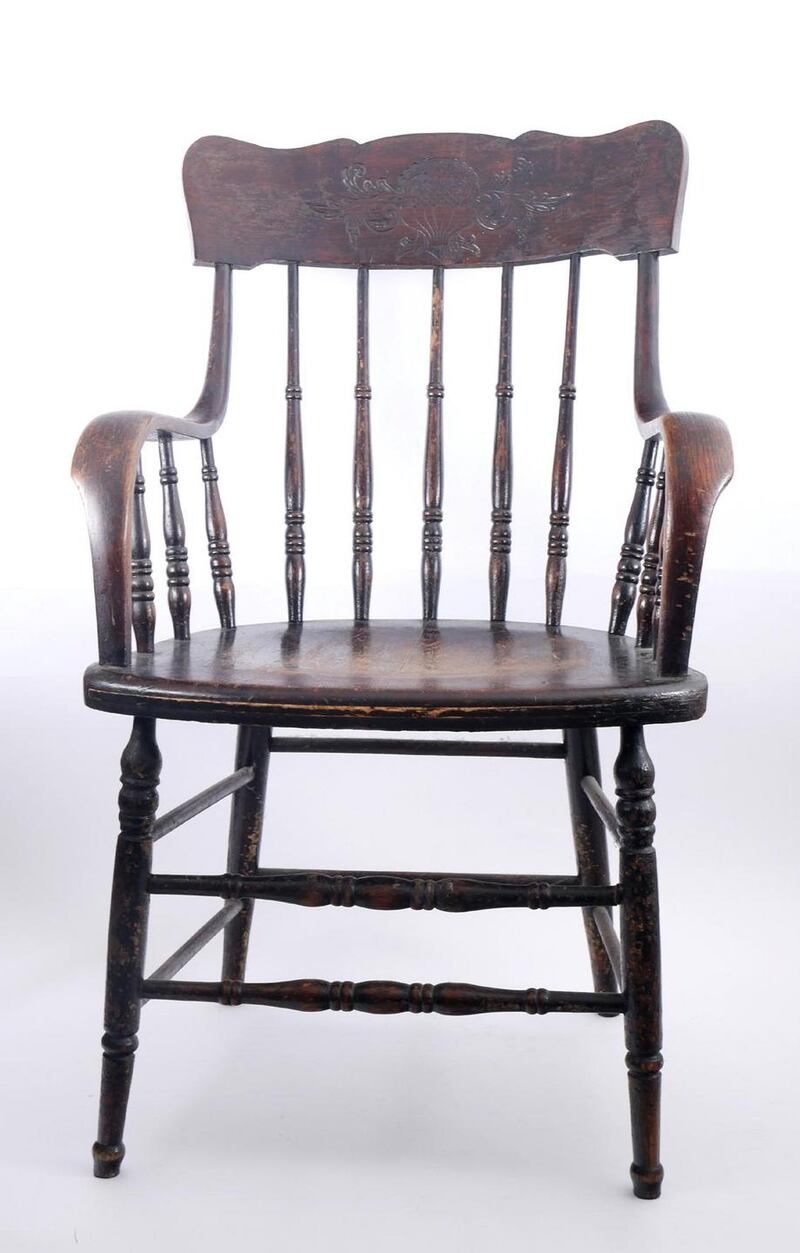
“It’s a simple arts and crafts oak and beech chair. Every office in Ireland would have had a similar type of chair in it, before swivel chairs came on the scene,” says Stuart Purcell, head of collectibles of Whyte’s. “But that was the headmaster’s chair at St Enda’s school in Rathfarnham. And on that chair, revolution was dreamed of.”
When St Enda’s closed in 1935 the chair (Lot 95) was removed from the Hermitage – now the Pearse Museum – by Senator Margaret Pearse. It was given to Thomas Ernest Pearse, son of Patrick’s half-brother James, and has been handed down through the family ever since. A comfortable and practical piece of furniture, it speaks volumes about its owner’s famously frugal lifestyle.
“It’s extraordinary how an object can put you in a particular place – and that’s what we do with the Eclectic Collector sale,” says Stuart Purcell. “We take objects that have a connection to a certain point in time and make them available to people.”

The objects assembled for next week’s auction come in all shapes and sizes, from a set of gilt brass livery buttons made for the 1821 visit of George IV to Ireland, each one inscribed with his monogram and “Céad Míle Fáilte” (Lot 24, €150-€200), to a 3ft-long wooden rib from the wing of the first plane to cross the Atlantic, Alcock and Brown’s Vickers Vimy, which landed in Derrygimlagh Bog in 1919 (Lot 137, €6,000-€8,000).
Lot 162 (€100-€200) is an arrangement of bullets mounted in a small square frame, collected by schoolchildren in Belfast in the late 1960s and early 1970s. “They’d be picked up off the streets and traded in playgrounds,” explains Purcell. “It’s an extraordinary example of how people live in the midst of a conflict, little kids going to school every day and trading bullets.”
A more light-hearted example of people making the best of a stressful situation can be seen in a typewritten letter summarising the 1915 auditor’s report from Strokestown workhouse (Lot 275, €200-€300). Despite the workhouse’s “deficiency in coal and turf”, it says, there is “a considerable amount of wine, porter and whiskey” on hand – the implication being that the staff were using the coal budget to warm the cockles of their hearts.
There's more evidence of historical hardship in Lot 48 (€1,000-€1,500), a ship's log detailing famine relief to Ireland beginning in the spring of 1847. "The HMS Terrible was a steam-powered paddle ship," says Purcell. "By the time it was launched it was obsolete. So the royal navy would have been inclined to lend it to a charitable organisation rather than sell it at a loss."
Written in a tiny, painstaking hand, the log details load after load of “fresh” beef and vegetables, along with a bale of clothing for the Relief Association for Belmullet, arriving on board in the 10 days before the ship sets off for Blacksod Bay. It then chronicles the steamer’s journey to Mayo, passing Hook Head in Wexford, Beacon Rock off Baltimore, Achill Rocks – all places where, no doubt, there would have been on-shore populations of starving people.

Not all of the items in the auction commemorate the tragedies of history. Lot 41 is an amusing little Derbyshire stoneware bottle in the form of a figure of a prim-looking Daniel O’Connell holding a bill marked “Irish Reform Cordial” (€300-€500). Such was O’Connell’s celebrity that likenesses of him turned up everywhere – the sale also offers two 19th-century Staffordshire figurines (Lots 39 and 40, €240-€400 each).
The biggest names in Hollywood turn up in a 1940s autograph album (Lot 594, €1,500-2,000). The signatures were collected by schoolboy Harve Bennett, who appeared on the radio show Quiz Kids and went on to become a Star Trek legend, developing the premise for the Star Trek film The Wrath of Khan and producing the films The Search for Spock, The Voyage Home and The Final Frontier.
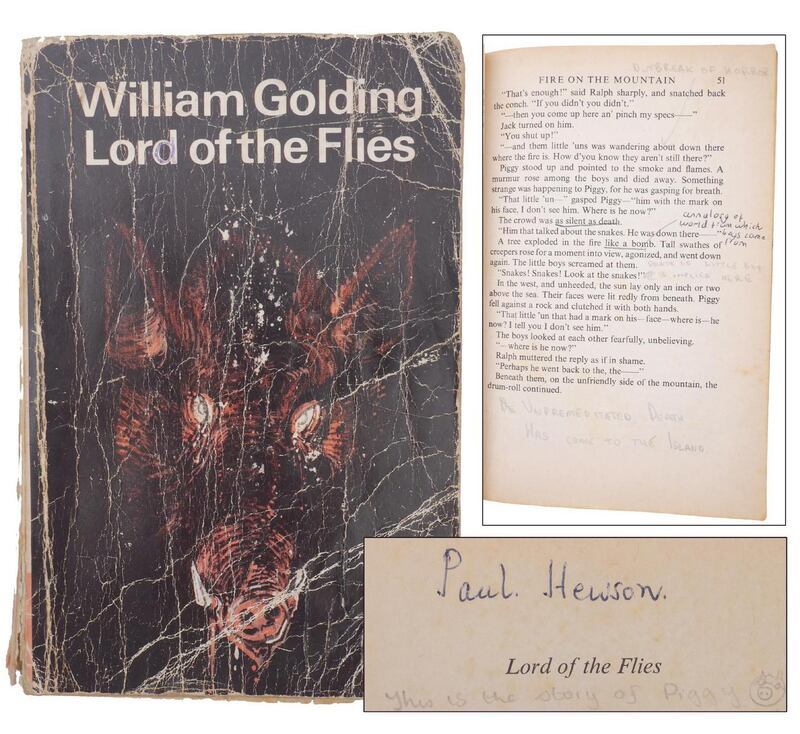
A cluster of objects in the sale record celebrities of more recent vintage. Lot 589 (€400-€600) is Bono's copy of William Golding's novel Lord of the Flies. The well-thumbed paperback contains Paul Hewson's signature and some notes on the half-title page which show its owner to have been paying careful attention in English class. Another musical memento with an educational connection is a page from a mathematics exercise book, inscribed in red with the legend: "Stay Free … Jimi Hendrix" (Lot 582, €500-€700).
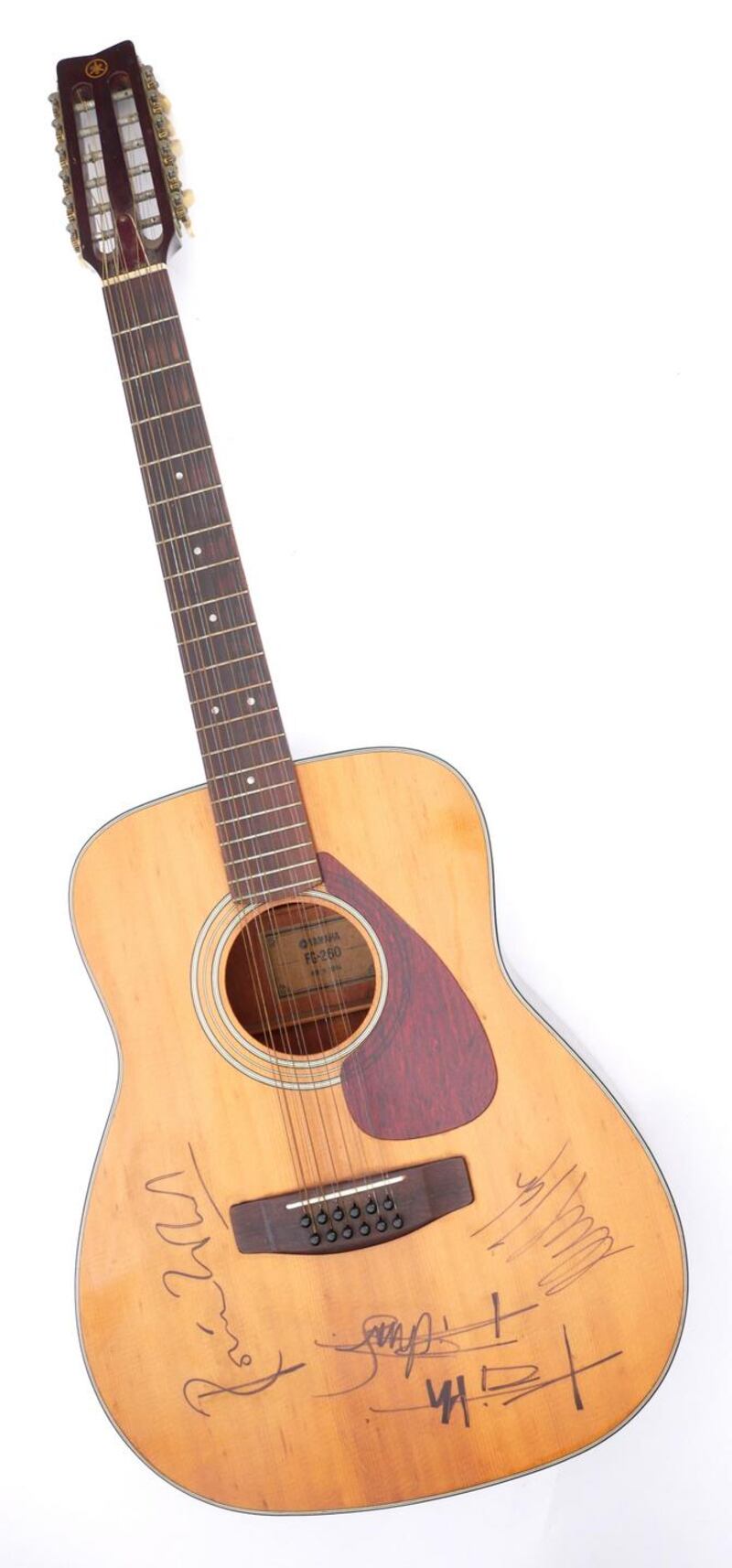
Rolling Stones memorabilia includes Lot 587 (€400-€600), a centrefold from Fab magazine autographed by the band members, including Brian Jones. And Lot 586A (€800-€1,200), a 12-string guitar signed by the band members in 2013.
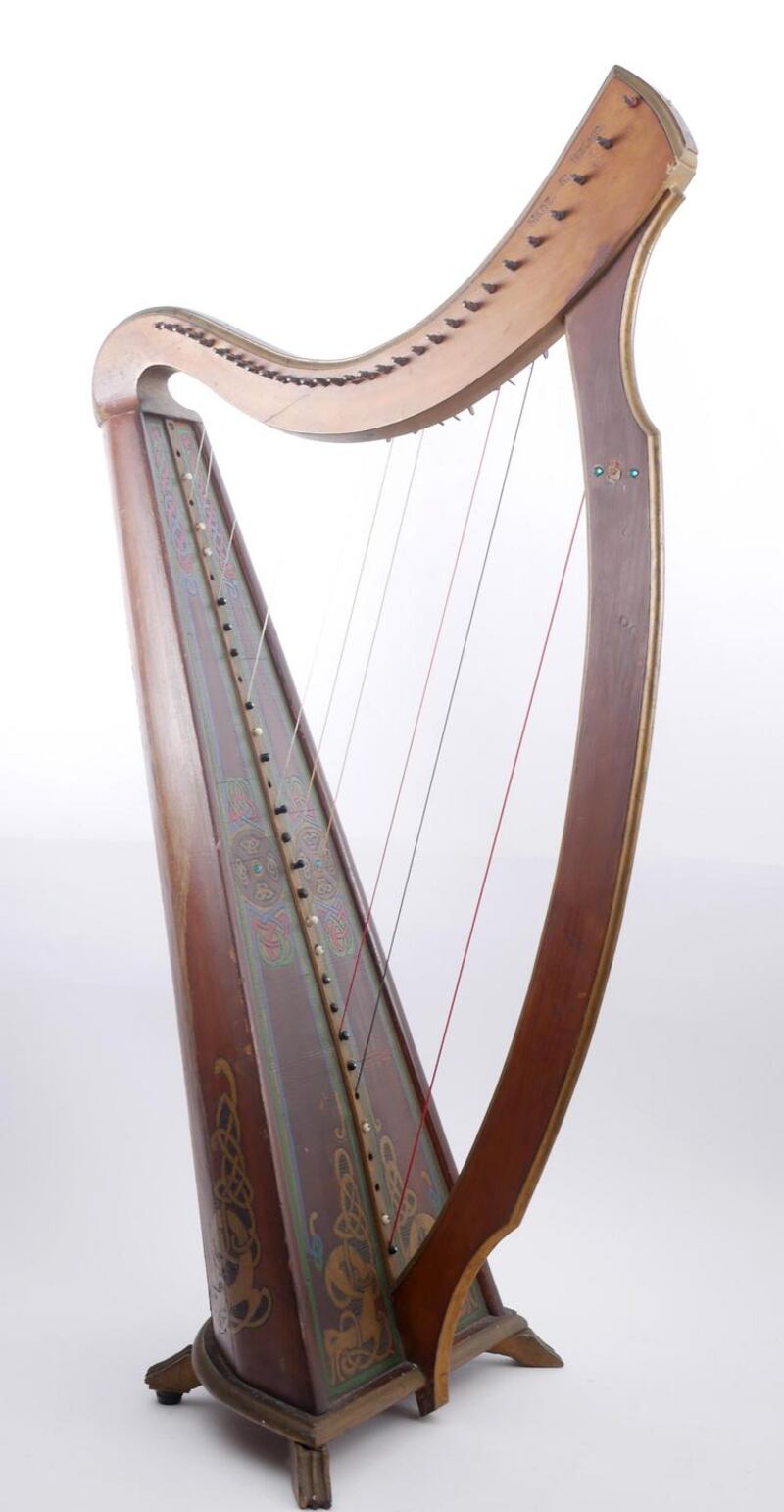
Lot 86, a Celtic harp, comes to Molesworth Street from Sydney, Australia, where it was purchased in a car boot sale. Made by James McFall in Belfast during the Celtic Revival, the instrument was designed to be portable enough for concerts in private houses. “It’s very much of the moment,” says Purcell. “In 1910, these were the height of fashion and they don’t come up for sale very often.”
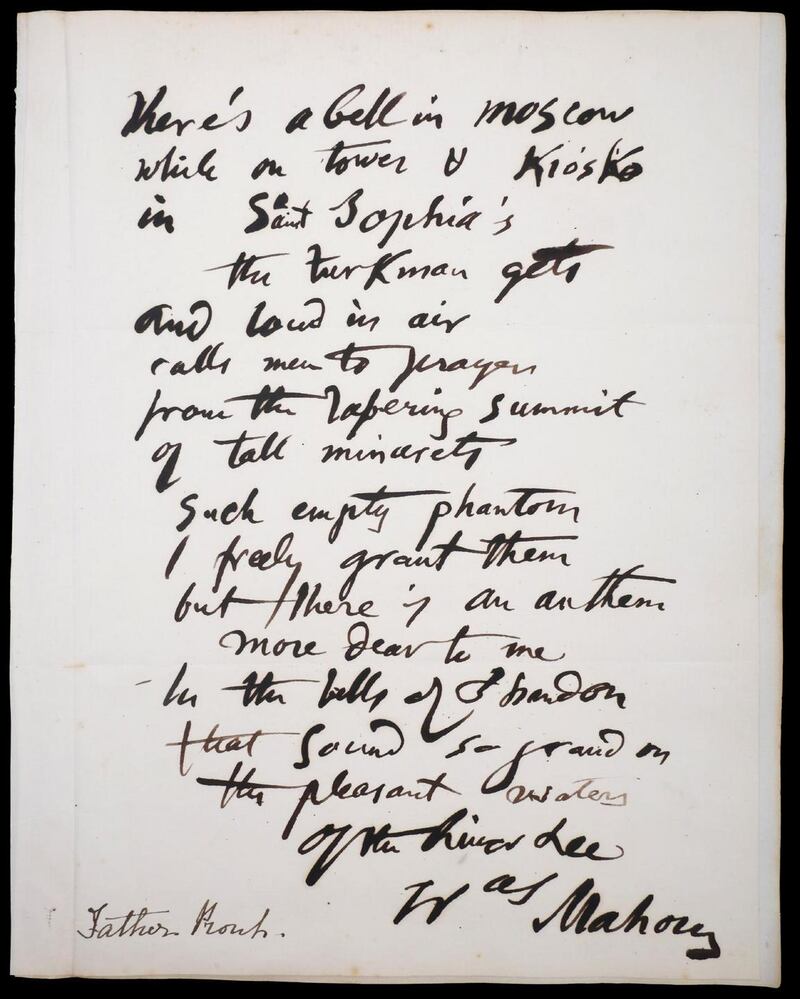
Nor do definitive versions of song lyrics; especially songs which people always get wrong. Lot 223 is a hand-written copy of the poem, and traditional Cork anthem, The Bells of Shandon. It's accompanied by an 1855 letter from one Bernard Burke, who met its creator Francis Sylvester Mahoney – better known as the satirist Father Prout – and asked him for the correct version of a line from the final verse which, even then, was always written wrongly.
Check it out online: you’ll still see it written incorrectly today. But we can now reveal that the line, “While on tower and Kiosk, O!” should in fact read, “While on tower and kiosko”. All together, now . . .
Whyte's, 38 Molesworth Street, Dublin 2. The Eclectic Collector sale, Freemason's Hall, Molesworth Street, Saturday September 15th, 11am. Some 590 lots, to include maps, silver, advertising signs and posters, jewellery and watches, militaria, coins, banknotes and medals, including the final tranche of the FE Dixon collection. For online catalogue, viewing times and bidding details see whytes.ie










